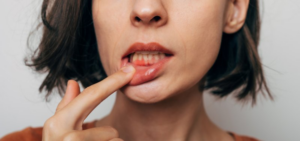
You know what a pocket is, but somehow, you doubt a periodontal pocket is something you’d want to store your keys in. Indeed, this oral condition creates a bad sort of space between your teeth and your gums. They’re caused by gum disease, and if you have them, you should contact your periodontist for a scaling and root planing ASAP. Keep reading to learn all about periodontal pockets and how they’re treated.
The Science of Periodontal Pockets
There’s more than just pink tissue underneath your gums. They cover the bone, ligaments, and other connective tissue that are responsible for keeping your teeth in place. Normally, your gingival margin (a.k.a. your gumline) forms a tight seal around your pearly whites by sticking to the dental roots.
If gum disease goes untreated for long enough, chronic inflammation pushes your pink tissue away from your dental roots. This forms a “pocket” of empty space, and is usually an indication that gum disease has progressed to a more advanced form known as “periodontitis” – hence the name “periodontal pocket.”
Symptoms of Periodontitis
Ultimately, periodontal pockets make it easier for gum disease bacteria to spread to the bones and ligaments holding onto your teeth. Should these essential supports deteriorate, you could very well lose your pearly whites. These symptoms can be a sign that a case of gum disease has become a case of periodontitis:
- A receding gumline
- Longer-looking teeth
- Exposed dental roots
- Chronic bad breath
- Loose teeth
- Sudden dental misalignment
- Discomfort or difficulties while chewing
Treatment: Scaling & Root Planing
Fortunately, there is a way to reverse periodontal pockets and restore your oral health! During a scaling and root planing treatment, your periodontist will use special tools to eliminate bacteria clinging to the surface of your teeth and the tissue below your gumline. Once these harmful pathogens are removed, your periodontist will gently smooth out your gums to encourage them to reattach to your dental roots. Your periodontal pockets will gradually close, which will help prevent future reinfection.
If you suspect you might have gum disease or periodontal pockets, contact your periodontist right away. They’ll take care of your smile promptly and protect you from tooth loss!
About the Author
Dr. Eduardo R. Lorenzana is a highly experienced periodontist – which basically means he specializes in treating periodontitis. Thanks to his extensive education, he’s well-qualified to identify the various stages of gum disease and perform a scaling and root planing if necessary. To ask Dr. Lorenzana about your symptoms or schedule a timely appointment, call 210-492-3519.

